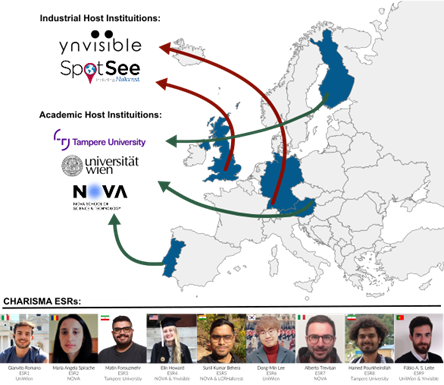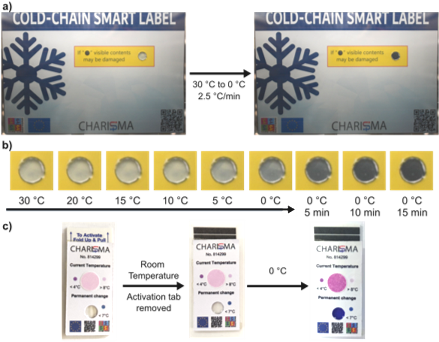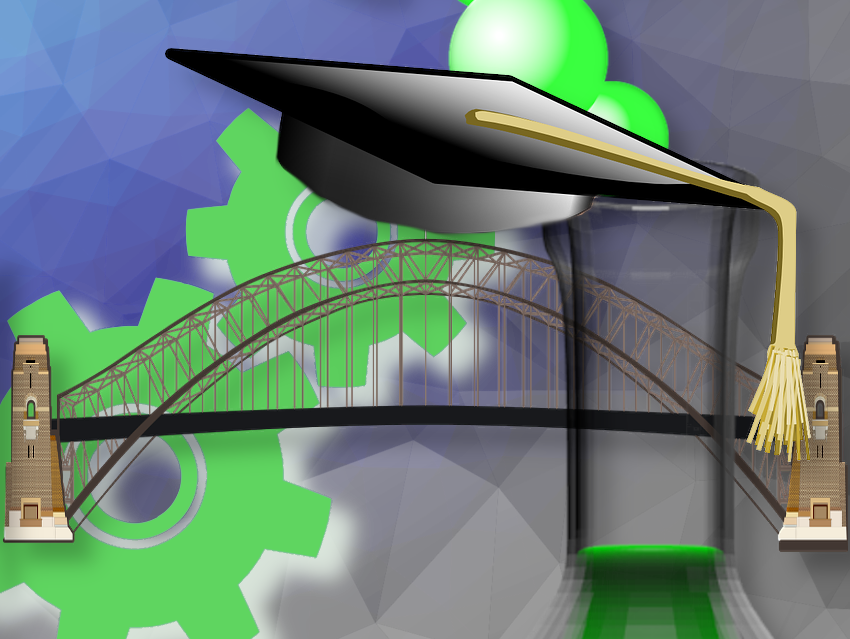How can academia and industry work together more effectively to drive innovation?
Academia is typically focused on exploring ideas and advancing knowledge, while industry applies discoveries to develop practical solutions and innovations. However, for meaningful and impactful progress, integrating both fundamental research and applied practices is essential, as each informs and enhances the other.
Fundamental knowledge identifies why certain technologies may be inefficient, enabling optimization, while industry applications guide research by revealing necessary adjustments for real-world use.
A major challenge to effective innovation is the lack of robust collaboration between academia and industry, complicated by a shortage of cross-sector professionals who can bridge the gap between theoretical and applied research. Although the boundaries between academia and industry are becoming more fluid, with professionals moving between both sectors and enriching each other, this is still not enough. Despite the mutual benefits – academics gain access to real-world applications and data, and companies benefit from cutting-edge research – achieving true synergy remains difficult. This is largely due to the limited training of individuals capable of bridging both fields, the absence of clear frameworks for their integration, as well as diverging interests (publication vs. product development) and a lack of structural support for implementing these collaborations.
To bridge this gap, we believe that collaboration must be fostered early, starting at the student level. By incorporating industry exposure, hands-on projects, and joint intersectoral mentorship into academic curricula, students can develop the skills needed to navigate both the academic and industrial worlds. For these students, the divide will gradually blur, fostering a new intersectoral language and ethos allows for seamless integration of the two sectors.
1 An Example of Intersectoral Training
In our experience, a successful model of academia-industry collaboration in the intersectoral training of doctoral students is the Marie Skłodowska-Curie Actions Industrial Doctorates (DN-ID MSCA) initiative, supported by the European Union [1]. These doctoral networks combine research training with industry exposure, requiring students to spend at least 50% of their time in non-academic settings. This hybrid model produces Ph.D.s who are fluent in both academic thoroughness and industrial pragmatism, creating skilled professionals for whom intersectoral communication is second nature. This fosters the development of a more effective way of collaboration between academia and industry.
Our DN-ID project, “Entrepreneuring Chemical Irreversibility To Prototype Responsive Smart Labels” [2,3], CHARISMA, is an example of the successful collaboration between academia and industry. It brought together nine early-stage researchers (ESRs) from eight countries, working across five European nations, three academic institutions, and four industrial partners (see Fig. 1). The collective goal was to develop fully printable irreversible electrochromic smart labels, capable of providing tamper-proof visual information on environmental conditions and verifying product authenticity. These labels are especially valuable in industries prone to logistical failures, such as cold chain biopharmaceuticals and food and beverages, or sectors highly affected by tampering, such as fashion.
These devices combine traditional labeling with digital elements like electrochromic displays (ECDs), power units, Radio-Frequency Identification (RFID), and Near Field Communication (NFC), allowing users to easily access critical information about sensitive products and their logistics. By integrating environmental sensors, such as temperature sensors, the labels can quickly detect events like temperature spikes in sensitive products, instantly providing clear visual feedback without the need for a read-out device. The irreversible nature of CHARISMA smart labels guarantees tamper-proof, reliable communication, enhancing the safety and integrity of the conveyed information.
This project allowed students to experience the urgency of addressing real-world challenges by developing innovative solutions, exploring the fundamental aspects of the technology, and meeting industrial standards for product development. They gained valuable insights into refining products, from the molecular level design to full-scale device integration.
Beyond focusing on the project’s goals and long-term impacts, it’s also important to consider the experience from the perspective of the early-stage researchers (ESRs), such as Fábio Leite, who is designated as ESR9, meaning he is the ninth researcher in the CHARISMA project. Below, we share his insights, which reflect his unique journey and contributions to the initiative.

Figure 1. The CHARISMA Innovative Training Network (ITN) project consists of multiple host institutions and Early Stage Researchers (ESRs) working together to advance research and training in smart label technologies, with each institution providing resources and mentorship to enhance the ESRs’ contributions.
2 The ESR Experience: A Journey of Growth and Discovery
My Start During COVID-19
My Ph.D. journey within the CHARISMA project unfolded primarily in the industrial sector, specifically at Ynvisible Gmbh in Freiburg im Breisgau, Germany. The original plan was to spend 75% of my program at Ynvisible and the remaining 25% at the University of Vienna, where I was affiliated for my Ph.D. However, when I moved to Germany in 2020 to begin my studies, the onset of the COVID-19 pandemic drastically altered the project’s course. Instead of starting in a laboratory and attending networking events as expected, we began our work confined to our bedrooms—a significant challenge, especially since many of us had just relocated from our home countries.
Despite travel restrictions, we persevered. Through consistent communication and online collaboration, we maintained interdisciplinary work, participated in secondments, workshops, and conferences, and engaged with people from different backgrounds. This ensured that our training continued without major setbacks. In the laboratory, careful planning was crucial to prioritize experiments and lab space while ensuring safe working conditions. Gradually, we regained access to the labs and resumed the mobility typical of such programs, which we came to appreciate even more after the difficult start.
My Project
My project focused on developing a screen printable electrolyte for electrochromic displays (ECDs) [4]. At Ynvisible, I explored various technical aspects of ECD assembly, including optimizing the printing process, display engineering, refining production methods, and enhancing characterization techniques. Additionally, I learned to align my research with industry needs, transitioning from material development to leading product development.
After nearly two years, I moved to Vienna for a secondment with the Bonifazi group at the University of Vienna. This phase underscored the benefits of the DN-ID experience, enabling me to explore fundamental research questions and address critical project bottlenecks. In particular, the academic training I received was instrumental in understanding the material properties and requirements and linking them to their optimal formulation and printing feasibility, which had previously been challenging.
In the final months of my Ph.D., this collaborative work led to the successful development of the first screen-printable electrolyte for high-performance ECDs, which the Ynvisible marketing team used to attract customers at trade shows and exhibitions. This achievement would not have been possible without the collaboration between both teams in training and R&D activities.
Personal Benefits
In addition to the intersectoral training, one of the most valuable aspects of the DN-ID program was the opportunity to collaborate with individuals from diverse backgrounds. This included not only the PIs and ESRs involved in the project but also technicians, engineers, designers, manufacturing staff, and business developers, each bringing unique perspectives and approaches. Mastering the art of tailoring communication for different audiences and leveraging their expertise proved to be an invaluable career-building experience.
Furthermore, the project allowed my fellow ESRs and me to immerse ourselves in various cultures and countries. Coming from eight different nations and working in multiple countries for extended periods provided a truly immersive cultural experience. These experiences not only strengthened our connections but also significantly contributed to our personal growth and development.
3 Through the Eyes of a Principal Investigator (PI)
From the perspective of the Principal Investigators (PIs), the DN-ID program has catalyzed transformative research with significant impact on both academia and industry. Through shared mentorship and collaboration, the PIs have witnessed the merging of academic rigor and industrial applicability, resulting in tangible and commercially applicable breakthroughs.
The project has had a profound impact on the working groups involved, spreading the ethos of intersectoral integration. This collaboration has increased engagement from industry stakeholders in directing research priorities and shaping publications across both sectors, ensuring that outcomes are academically robust and industrially relevant. Furthermore, the program’s emphasis on industry-aligned research and training has successfully integrated industrial involvement into academic courses. We expect these results to influence academic discourse and act as a seed for further academic-industry interaction, fostering the development of spin-offs and lasting partnerships.
4 Collaborative Achievements of the CHARISMA Team
Thanks to the collaborative efforts of the ESRs and PIs, the CHARISMA project successfully achieved its objectives, resulting in the development of smart labels with significant industrial applicability and market potential through the assembly of separate components developed by different ESRs. Figure 2 shows two examples of these indicators:
Figure 2a features a smart label with an irreversible electrochromic display (ECD) triggered by a thermal sensor and powered by three supercapacitors providing 3 V. When the temperature drops below 6 °C, the system activates, causing a noticeable color change that indicates an issue with the product’s conservation conditions.
Figure 2b illustrates another smart label equipped with two thermochromic sensors. The first sensor is reversible, changing color when temperatures exceed approximately 8 °C and returning to its original color when temperatures normalize. The second sensor is irreversible, permanently changing color when temperatures drop to 0 °C, providing a clear indication of potential temperature-related issues with the product.

Figure 2. Examples of temperature smart labels developed in the CHARISMA project include: a) a cold-chain label with a fully printable irreversible electrochromic display (ECD), triggered by a temperature sensor and powered by three supercapacitors; b) an irreversible ECD that changes color in response to cooling events; c) a thermochromic indicator showing a color change at 0 °C; and d) a thermochromic indicator template commercialized by SpotSee® using inkjet-printed thermochromic films.
5 Looking Ahead
Interdisciplinary Workforce Development Bridging Academia and Industry
The DN-ID program has fostered a remarkable blend of theoretical and technical growth, cultural immersion, and personal development for the ESRs. Thanks to this experience, they have evolved into a specialized interdisciplinary workforce that both industry and academia require. They are adept at translating new research into tangible products while understanding the underlying scientific phenomena governing the behavior of these products. Having matured as researchers within this integrated environment, they are well-positioned to bridge the gap and foster cooperation between these two sectors in the future.
Cultivating Academic Entrepreneurship and Integration of Skills Training Related to Industry
The experience of industry-aligned research leading to the production of commercial grade prototypes has motivated PIs to translate more of their fundamental research into applied projects, fostering a culture of academic entrepreneurship while promoting practical applications in scientific inquiry. Additionally, recognizing the benefits of industrial training for the ESRs, efforts have been made to integrate both hard and soft skills training into doctoral programs. This initiative has led to broader participation from industrial partners in teaching, providing the wider Ph.D. community with access to skill sets typically associated with industrial experience.
Facilitating Market-Driven Innovation
From the industrial perspective, there is a growing interest in integrating more fundamental insights, recognizing that changes in processes and the incorporation of radically novel technologies can be instrumental in driving marketable innovation that meets evolving market demands. This approach directly benefits society by facilitating the translation of cutting-edge research into practical applications.
Enhancing Research Visibility, Fostering Collaborative Ecosystems, Empowering Industry with Funding
We hope that more initiatives will be launched to support this collaboration, and more academic and research groups will engage in these consortium-based activities, fostering a shift in the culture of technology transfer based on standardization and open, intersectoral discussion. Increased recognition and visibility of papers resulting from this type of research in top-tier journals will serve as a catalyst for ongoing collaboration and innovation in the years to come, providing strong incentives for academics. Additionally, access to dedicated funding will empower industry to test and adopt new technologies without the risk of losing capital due to production interruptions.
Involving all stakeholders of innovation, including academic researchers, industry leaders, policymakers, funding bodies, and educational institutions, is crucial for creating a robust ecosystem that supports and accelerates the translation of technology into practical applications that address pressing global challenges and improve quality of life.
References
[1] Doctoral Networks | Marie Skłodowska-Curie Actions.
[2] ENTREPRENEURING CHEMICAL IRREVERSIBILITY TO PROTOTYPE RESPONSIVE SMART LABELS | CHARISMA Project | Fact Sheet | H2020. CORDIS | European Commission. https://doi.org/10.3030/814299
[3] CHARISMA Webpage of the European doctoral program funded by Horizon 2020, training Ph.D. students in smart label technologies through interdisciplinary research in chemistry, physics, and engineering. (accessed October 15, 2024)
[4] Fábio A. S. Leite, Piotr Wierzchowiec, Carlos Pinheiro, Laura Maggini, Davide Bonifazi, Hybrid Screen Printable Electrolyte for Large-Scale Flexible Electrochromic Display Production, Adv. Technology Mater. 2024. https://doi.org/10.1002/admt.202401112
Authors
Fábio A. S. Leite, Davide Bonifazi, and Laura Maggini from the Institute of Organic Chemistry at the University of Vienna in Austria
Also of Interest

A compilation of articles on experiences from studying abroad





